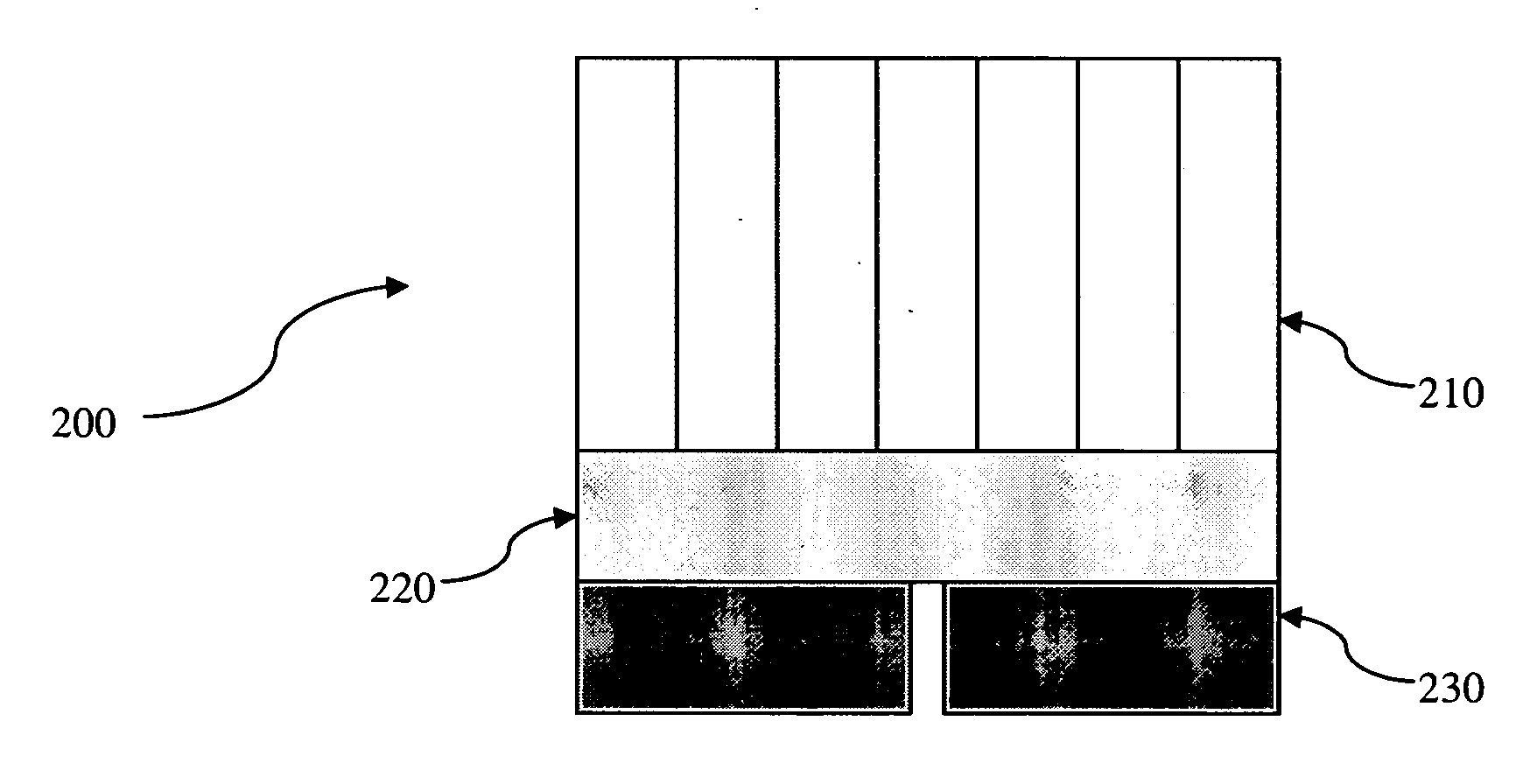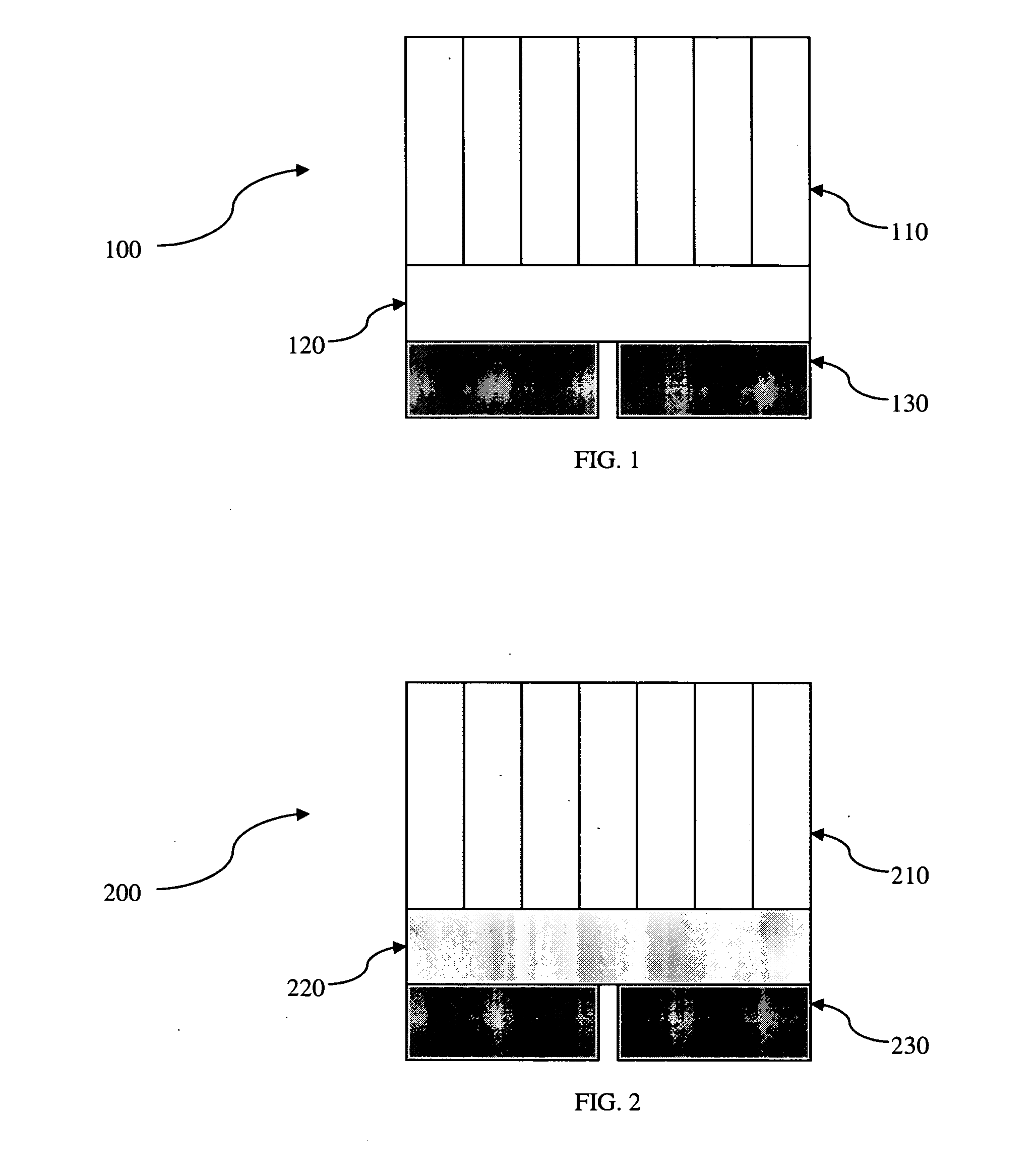Wavelength shifting lightguides for optimal photodetection in light-sharing applications
a lightguide and wavelength shifting technology, applied in the field of nuclear medical imaging, can solve the problems of difficult to make scintillator materials with good pet properties, and not well matched for use with other types of photodetectors
- Summary
- Abstract
- Description
- Claims
- Application Information
AI Technical Summary
Benefits of technology
Problems solved by technology
Method used
Image
Examples
second embodiment
[0022]FIG. 3 depicts the invention in the form of block detector 300. Block detector 300 includes a scintillator array 310. The light emitted from scintillator array 310, in response to interaction with a gamma ray, may pass through a wavelength shifting coating 340 on the entry surface of an optical lightguide 320. As the light passes through wavelength shifting coating 340, the wavelength increases as the energy of the light photons is partially dissipated in the wavelength shifting coating. The coating may be a wavelength shifting chemical, a dye, a plastic, or any other wavelength shifting material. The light is then transmitted through lightguide 320 to photodetectors 330.
third embodiment
[0023]FIG. 4 depicts the invention in the form of block detector 400. Block detector 400 includes a scintillator array 410. The light emitted from scintillator array 410, in response to interaction with a gamma ray, is transmitted through optical lightguide 420. As the light exits lightguide 420, it passes through a wavelength shifting coating 440 on the exit surface of lightguide 420. As the light passes through wavelength shifting coating 440, the wavelength increases. The coating may be a wavelength shifting chemical, a dye, a plastic, or any other wavelength shifting material. The light then reaches photodetectors 430.
[0024]FIG. 5 is a graph showing the ranges of an absorption spectrum 510 and an emission spectrum 520 of a typical wavelength shifting material BC-482A made by Saint Gobain. Such wavelength shifting material may have an absorption peak at 420 nm and an emission peak at 494 nm. If such a material were used in place of an optical lightguide it would increase the ligh...
PUM
 Login to View More
Login to View More Abstract
Description
Claims
Application Information
 Login to View More
Login to View More - R&D
- Intellectual Property
- Life Sciences
- Materials
- Tech Scout
- Unparalleled Data Quality
- Higher Quality Content
- 60% Fewer Hallucinations
Browse by: Latest US Patents, China's latest patents, Technical Efficacy Thesaurus, Application Domain, Technology Topic, Popular Technical Reports.
© 2025 PatSnap. All rights reserved.Legal|Privacy policy|Modern Slavery Act Transparency Statement|Sitemap|About US| Contact US: help@patsnap.com



